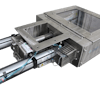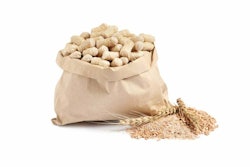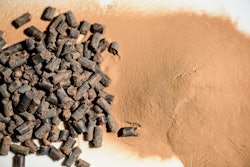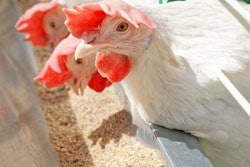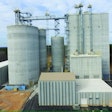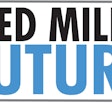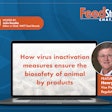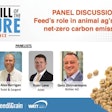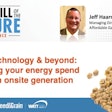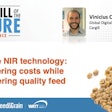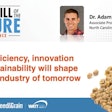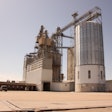With the rising global demand for food and emerging environmental restrictions, feed producers must find innovative ways to be efficient and sustainable. Feed industry stakeholders contend with the challenges and opportunities brought by these critical macro issues, and look to the promising technologies that can enhance efficiency.
How can feed producers to stay ahead of market demands and promote sustainable, efficient and climate-resilient feed production amid heightened consumer awareness and environmental concerns?
Antoniel Franco, Selko's technical commercial manager of feed processing and quality, joins the Chat to explore the future of the global animal feed industry up to 2030, emphasizing the importance of doing more with less.
Transcription of Feed Strategy Chat with Antoniel Franco, technical commercial manager - feed processing and quality, Selko
Jackie Roembke, editor in chief, WATT Feed Brands/Feed Strategy:Hi, everyone. Welcome to Feed Strategy Chat. I’m your host, Jackie Roembke, editor in chief of WATT Feed Brands and Feed Strategy magazine.
This edition of Feed Strategy Chat is brought to you by WATT Global Media and FeedStrategy.com. FeedStrategy.com is your source for the latest news and leading-edge analysis of the global animal feed industry.
Today we’re joined on Zoom by Antoniel Franco, Selko’s technical commercial manager of feed processing and quality. He’s here to discuss how the demands on feed producers may change between now and 2030, and what feed producers can do to prepare.
Hi, Antoniel, how are you today?
Antoniel Franco, technical commercial manager - feed processing & quality, Selko:I'm good, how about you?
Roembke:I'm doing well. Thank you. Well, let's get right into it.Looking ahead to 2030, what emerging macro trends do you think will have the greatest impact on the global animal feed industry?
Franco:One of the biggest points that I can see looking at the feed industry over the last 15 years is really doing more with less. We need to be more efficient when we're producing the feed. With the rising global demand for food, which will be reflected in the feed demand, we need to be prepared as an industry, as feed ingredient suppliers or feed millers, to supply that, to give that support to the customers.
We won't be able to raise more grains or more ingredients from the field because, of course, things are getting really restrictive. We are not going to be supporting deforestation anywhere because that's not the goal. It is really doing more with what we already have, which is really enough, we just need to make sure that we're being efficient. That we're doing it in a better way to meet the global demand for food.
It's really doing more with less, if possible, or at least doing more with what we already have in place. We're talking about ingredients supply chain, we're talking about feed mills, capacities, equipment, etc.
Of course, new technologies are always coming – and that's good, that's how we evolve and develop – but we need to be also aware that there are a lot of feed mills already running and they're not going to be able to replace equipment in the short term. We need to make sure that those feed mills are producing at a high capacity or even more with the help of some additives or products that can really force them or help them to achieve those goals.
Roembke: Can you identify particular challenges or opportunities that align with those trends you just mentioned?
Franco:Oh, yes, for sure. For example, partnership between the industry, research facilities and universities are looking to help with that. Working towards better feed processing and also working together with companies providing the equipment that are always looking for ways of doing more with less.
Looking into ingredients that help when you're talking about feed efficiency, feed mill production, it’s getting more from the equipment that you have. Nobody is going to be replacing the feed mill like that – it is quite an expensive transition. So, the way of doing it is by looking for ingredients or additives or products that can help maximize the equipment that the operator already has in place. With moisture management and better quality, better PDI (pellet quality index), and help the customer to get more from the equipment and do more with what they already have in place.
Roembke: You mentioned the equipment and other innovations. Could you identify some of the most promising technologies that will help address those efficiency issues?
Franco:We are talking about what new technology is coming. It's already in place, but it's still in its infancy. In-line NIR will really help the feed mill producer to achieve the nutritional levels for that feed. The way it's going in the industry is working with a safe level when you're formulating, considering the ingredients levels, because we're not really analyzing the ingredient that you use to generate like an average for formulation. So that's one trend.
Another thing that is starting to really grow more is the usage of sensors in the feed mill to make sure that everything is working with the proper temperature, with the proper moisture, etc.
Nowadays, more and more companies use automation technology and artificial intelligence (AI) – which is also coming to the feed industry. We sometimes think about the industry as using old equipment, far away from the new technology, but the reality is that I've been seeing really nice feed mills up to date with high technology.
The demand for sensors – moisture and temperature readers that can interact within them – and also with the automation systems will really help the feed miller, the plant manager, to get the most from the equipment, because they can really work with a safe level, in a safe margin, because they are getting the information online right away as it happens.
I can see some others, but those two points are really the new trends: in-line NIR and automation/artificial intelligence. We talk about Industry 4.0 as more coming from the auto industry, but this is also coming to the feed mill industry as well, because that's how you can really improve the usage of your equipment.
Roembke: In light of heightened consumer awareness and downstream commitments to reducing the food system’s environmental impact, what strategies can feed producers adopt to stay ahead of market demands? Identify solutions they can implement to promote more sustainable, efficient and climate-resilient feed production.
Franco:The customers are getting more and more knowledge, they are aware of all of the foods that they are eating, or actually they are starting to question: Where does this food come from?
And of course, that goes back out to the feed chain, where we act, and for example, the usage of antibiotics is highly restricted in some markets, the growth promoters, etc.
One of the alternatives, for example, is using organic acids, which can have a good effect on preserving the feed, or treating it for some of the bacterial issues, which would reduce the usage of these highly chemical ingredients.
当然,除此之外,努力一些rtnerships with the industries or research facilities to help them identify opportunities, how to improve the feed quality, and how to bring that knowledge or that awareness that consumers are asking for now, how can we be prepared for that? How can the feed address those concerns, and of course, that will reflect on the food chain and with that, also, to the final customer or consumer.
Roembke:Excellent. Thank you so much, Antoniel. And if you'd like more information about ways that companies are preparing for 2030, please visit our new site,www.feedmillofthefuture.com.
Thank you so much for your time. Thanks to you for tuning in.




